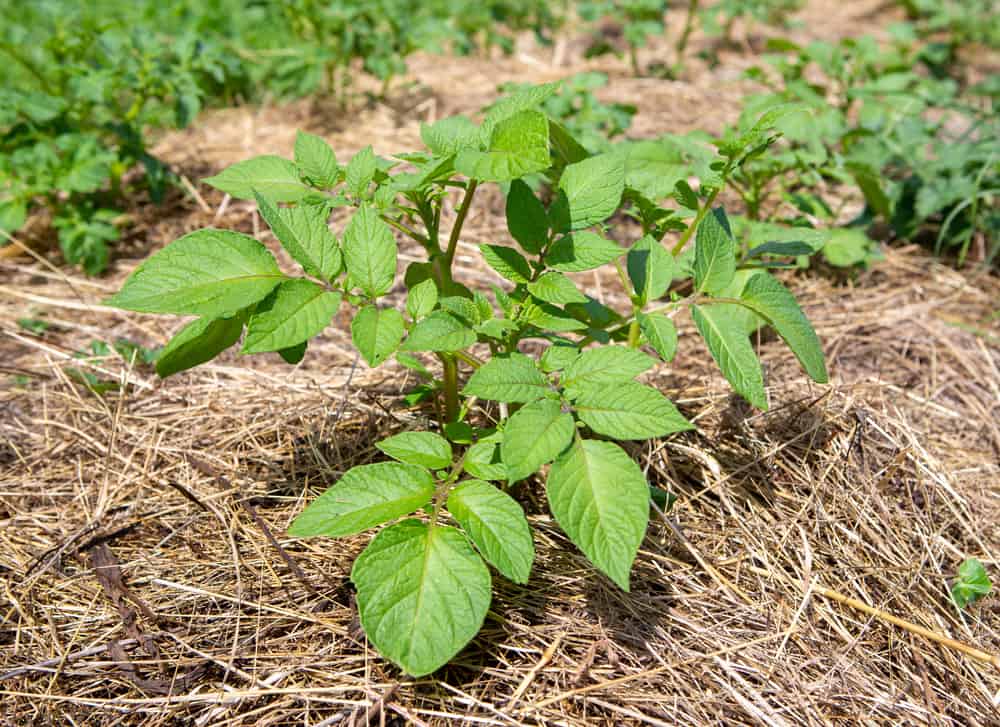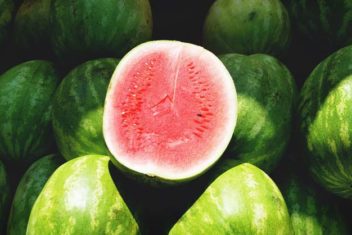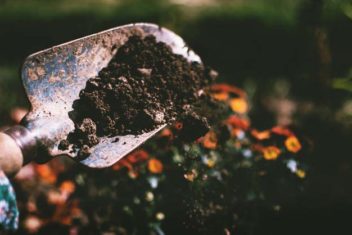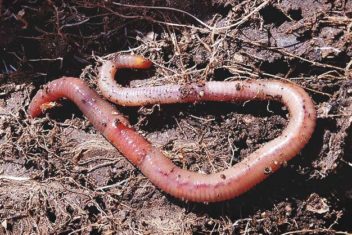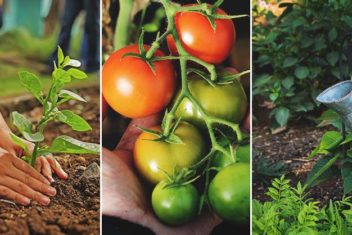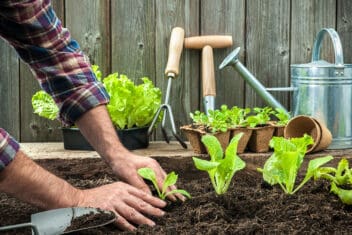The gardening world is always evolving and experts are constantly developing new ways to optimize growing space. One of the key figures in gardening innovation is Ruth Stout and her innovative method for gardening.
Now, this laidback approach to gardening might not be for everyone, but if you’re looking for an easy, relaxed method of gardening, you need to keep reading.
Here is an overview of the Ruth Stout method and how to implement it on your homestead.
Understanding the Ruth Stout Method
Ruth Stout is famous for her books “Gardening Without Work: for the Aging, the Busy, & the Indolent,” and “The Ruth Stout No-Work Garden Book: Secrets of the Famous Year Round Mulch Method.”
She developed a unique method of gardening that reduced the amount of work needed to maintain the garden. In contrast to the traditional methods of weeding and plowing, Ruth Stout believed that you could replace these practices with mulching.
Her method involves laying a continuous layer of mulch or hay over your garden to encourage a healthy growing environment for your plants and crops.
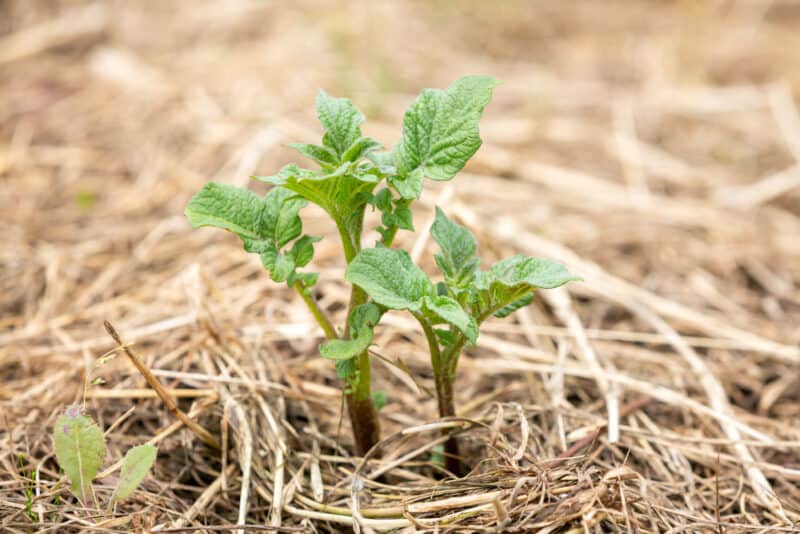
She was passionate about this gardening method, and she continued to publish books and magazine articles to inspire other gardeners to try her method starting in the 1950s and through the 1970s. Her books are still in production today.
Since her method was first published, curious new gardeners have been drawn to her approach due to its simplicity and easy-to-follow structure. If you’re new to gardening and looking after plants, this is a great method to start with.
As we said, the main technique of the Ruth Stout method is to lay a thick layer of hay mulch over the soil and let nature do the work.
She recommended also covering the soil in materials from your own garden like twigs, grass clippings, kitchen scraps, and pruning, making it an excellent method if you prefer more casual, organic gardening that utilizes the natural environment.
Ultimately, you let nature take over and provide a little support so your crops can grow and flowers can blossom in their own time.
How To Use the Ruth Stout Method
If you’re interested in trying the Ruth Stout method, there are a few tips to know. The first stage in creating the perfect Ruth Stout garden is understanding the soil on your property.
1. Amend About Your Soil
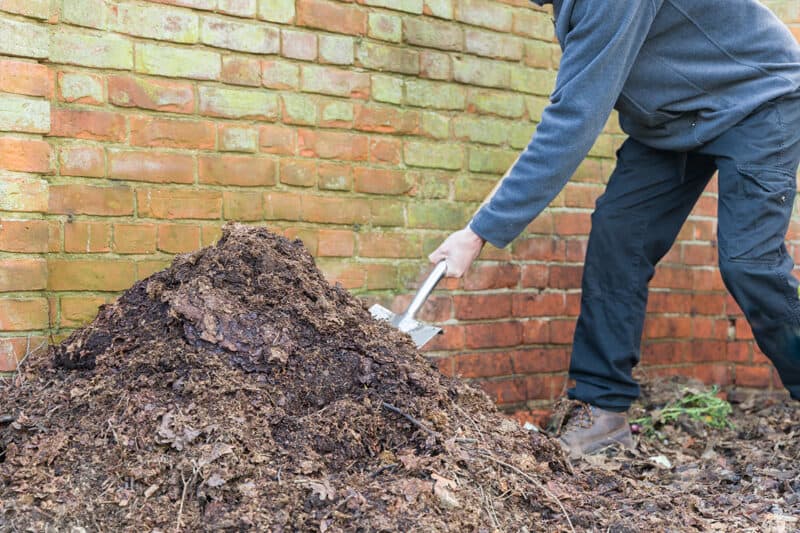
The main misconception of Ruth Stout gardening is to assume that you can throw mulch on any soil, and it will instantly fix your problems. This is not the correct way to use this method, and you need to spend time understanding what soil type and quality you have at home.
Otherwise, you could end up frustrated because the method isn’t working, and you can’t pinpoint where you’re going wrong.
First, determine your soil type and amend it as needed. For instance, if you have clay soil, it’s most likely that vegetables will find it hard to grow there as there is poor drainage.
To fix it, you should work in tons of well-rotted compost before adding the plants and hay mulch on top.
Sandy soil has more drainage, but the water can drain too quickly, and there isn’t enough nutrients for many plants. In this situation, add lots of well-rotted compost, and then add the hay mulch layer at the end.
2. Pick the Right Time To Begin
The ideal time of year to begin the Ruth Stout method is in late summer or early fall, as the temperatures will be moderate. If you begin the process in spring, it will still be too cold from winter, and the mulch will prevent the soil from heating up.
When you cover the soil with mulch in late summer and early fall, the soil will already be warm from the summer. This extra layer will prepare the ground for the following seasons.
Over time, the mulch breaks down and becomes compost to add nutrients to the soil.
3. Gather Your Mulch Materials
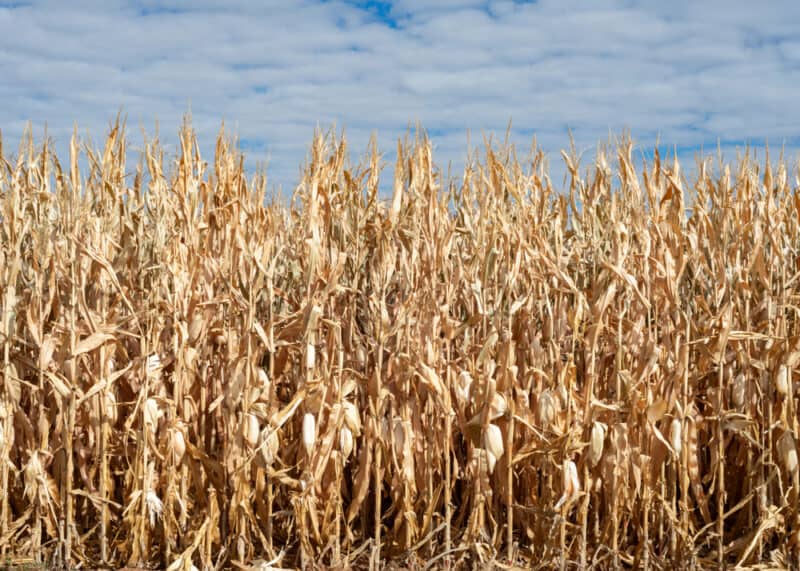
If you don’t have access to hay, you can still try this gardening method. As already mentioned, you can try leaves, but other options include the following:
- Straw
- Grass clippings
- Pine needles
- Seaweed
- Corn stalks
- Sticks
Depending on where you live and what material you can find, you can experiment with these different mulch options until you find the right choice.
4. Place the Mulch on the Ground
The next stage is placing the mulch on the soil. You don’t have to worry about tidying up the leftover plant material from falling leaves or grass clippings. This cuts a lot of time, and you can immediately spread the mulch when the time is right.
When you lay the mulch, it will suppress weeds and adds nitrogen to the soil. You should spread the mulch at least eight inches thick.
5. Begin the Planting Process
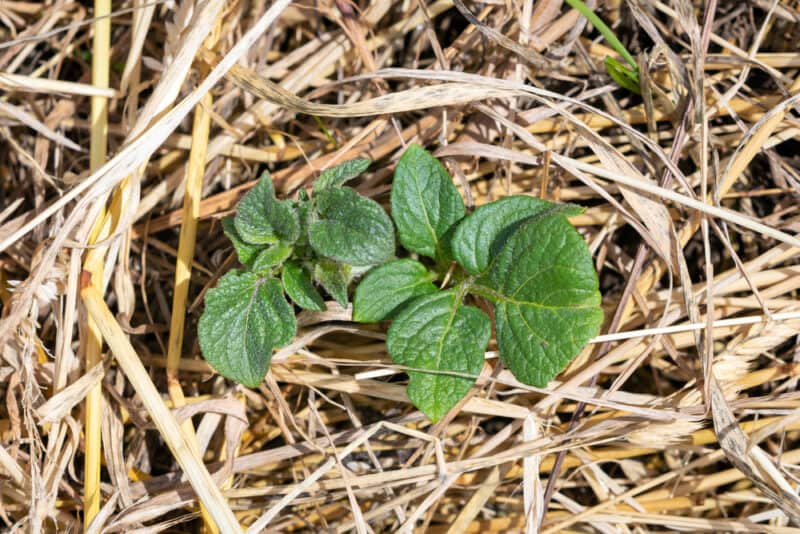
If you haven’t already, you can begin planting crops in your garden once the weather is appropriate.
According to Ruth Stout, she would sprinkle the seeds on the soil and gently pat them down and cover them with hay mulch.
Here are the most common vegetable crops you can plant in a Ruth Stout garden, but try whatever you want:
6. Add More
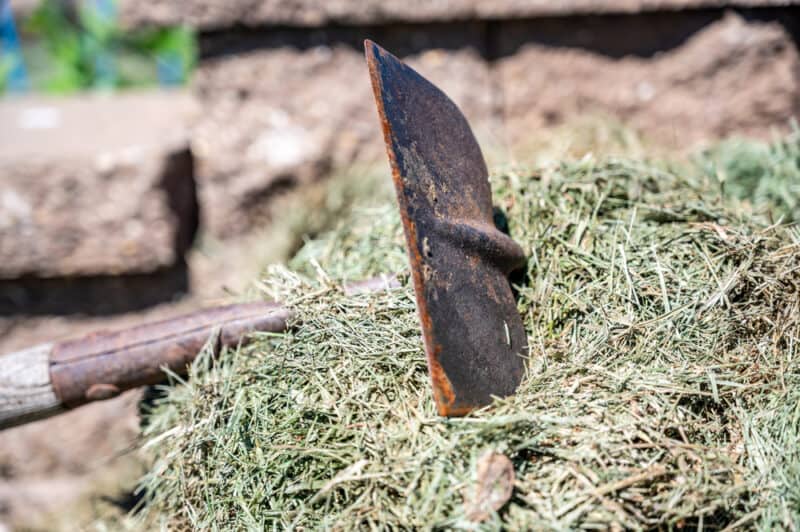
Keep adding mulch over time. The mulch will start to compress over time and you’ll need to replenish it. The mulch will keep the weeds away and adds nutrients to the soil so you don’t have to till, fertilize, weed, or worry about cleaning up.
Pros of the Ruth Stout Method
Even though traditional methods are effective and practical for gardening, that doesn’t mean they are the best option for your homestead. The Ruth Stout method is particularly beneficial if you want to grow crops and take care of plants with little effort.
Easy Gardening
One of the many reasons people never try gardening is that it requires a lot of extra work and attention that some people don’t have. With this gardening method, the primary aim is to make gardening more accessible and simple.
The Ruth Stout method is less physical than traditional gardening, which benefits older people and young children. So, if you want to get more people involved in the garden, this could be an excellent technique to try at home.
Ruth Stout was proud of her work, which she targeted at “lazy gardeners,” and it’s ideally suited to homesteaders who lead busy lives.
Cost-Effective
The Ruth Stout method can be used in any space regardless of size. So, you can try this technique in a small potato patch or a large homestead.
This method can save you money, especially if you choose hay which is often cheap to buy from local farms or markets. Using leaves from your trees or clippings from your lawn is free!
Less Watering
Another benefit of the Ruth Stout method is you don’t have to water as frequently as the mulch can retain the moisture better than traditional gardening methods. Therefore, if you’re worried about falling behind on the water routine, this method can help you stay on track.
Cons of the Ruth Stout Method
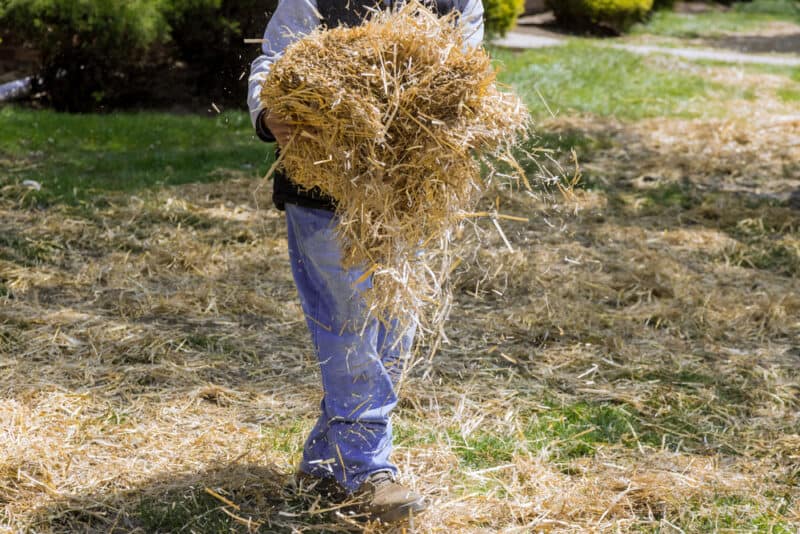
There are some drawbacks to using this method.
Aesthetics
The Ruth Stout method has only a few downsides, including aesthetic appearance. Although the appearance of your garden won’t be as tidy looking as with traditional methods, this shouldn’t stop you from using hay mulch.
However, if you want a lovely garden that’s tidy to look at, this is probably not the method for you.
Finding Supplies
Another con of the Ruth Stout method is finding enough material to cover your soil. If you have a small garden without many trees and you don’t have a lawn, you’ll probably have to buy some mulch. Hay can be hard to find at some times of the year.
